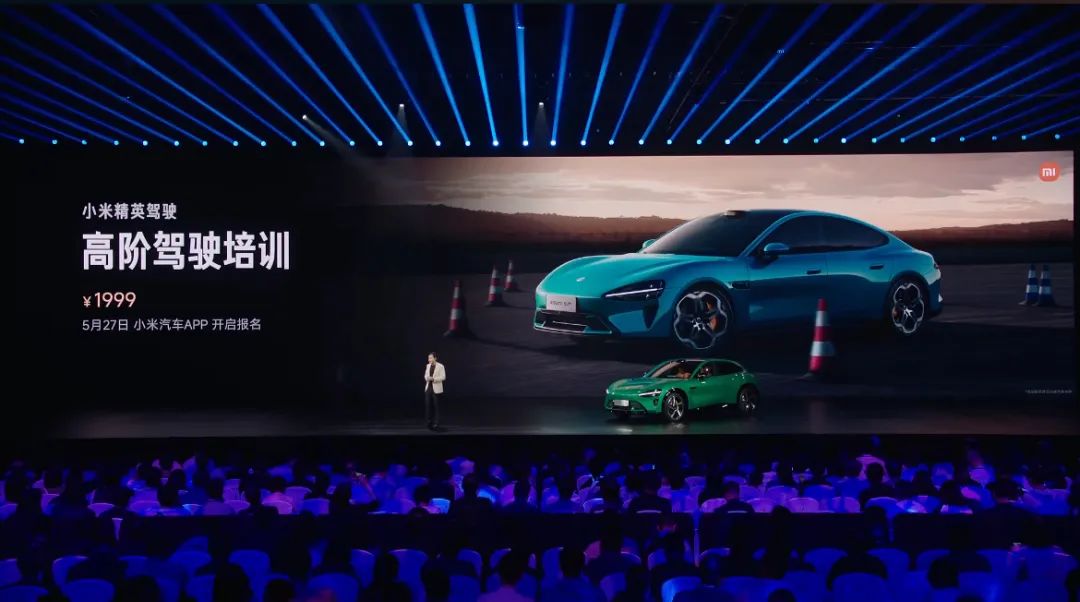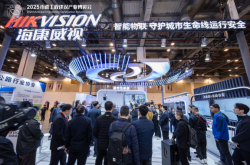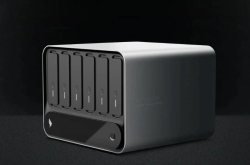Xiaomi's Dawn Amidst the Fog
![]() 05/23 2025
05/23 2025
![]() 496
496

Rebuilding brand trust stands as the paramount priority.
/
Produced by | Business Show
Xiaomi's 15th-anniversary strategic new product conference failed to capture the headlines as it usually does. The absence of excessive pre-event buzz or elaborate countdown posters allowed the spotlight to fall on the products and technology themselves, rather than the hype.
On the evening of May 22, Xiaomi's founder, chairman, and CEO, Lei Jun, posted on Weibo that the YU7 is expected to launch officially in July, and that tonight's pre-launch event would not reveal the official price or open small reservations.
Lei Jun's post attracted a myriad of voices from netizens. Besides discussions about YU7 and anticipation for the 3nm flagship chip "Xuanjie O1," there were continuous debates about the recent high-speed accident involving Xiaomi's SUV7, along with discussions about Xiaomi's marketing strategies.
The controversy lingers on. With the aid of social media, Xiaomi's every move is scrutinized under a microscope. Today, Xiaomi finds itself in a complex situation involving technological breakthroughs, new product launches, and public opinion crises. On one hand, there is a dawn in the chip field, with significant advancements in self-developed chips seen as a crucial step towards "breaking international monopolies." On the other hand, Xiaomi's automobile business is shrouded in a fog of public opinion due to a sudden accident during high-speed driving. The cause of the accident remains undetermined, and the internet is awash with various speculations and accusations, pushing the safety of Xiaomi's automobiles into the spotlight.
At the critical juncture of its 15th anniversary, Xiaomi's every action affects the nerves of the industry. The attention of capital markets, consumer groups, and even competitors is focused here. In the current complex and ever-evolving business environment, the pressure of technological iteration and market competition intensifies daily, and the uncertainty of the external public opinion environment is even more crucial to one's own brand reputation and market share.
A week ago, on May 15, Lei Jun addressed an internal event known as the "Our Xiaomi People's Values Conference." He discussed the public opinion crisis triggered by the recent Xiaomi SUV7 accident for the first time and shared his outlook on Xiaomi's future development.
Lei Jun remarked, "No one anticipated the impact of this accident to be so significant. Xiaomi has faced intense questioning, criticism, and accusations, and we were taken aback." Lei Jun also expressed that this accident made Xiaomi realize the high expectations and stringent requirements of the public towards it.
At the conclusion of this seemingly low-key conference, Lei Jun highly recommended Xiaomi's advanced driving training courses, which encompass subjects such as acceleration, braking, and emergency lane-changing exercises. Lei Jun shared that after over 30 years of driving, he only recently realized that the best response in an emergency is to "slam on the brakes."
This seems to be a subtle response to the Xiaomi SUV7 accident.
-Business Show-01
On the evening of May 22, Xiaomi unveiled its self-developed 3nm flagship chip, "Xuanjie O1." The Xuanjie O1 chip employs the industry's most advanced second-generation 3nm process in mass production, integrating 19 billion transistors within a compact 109 square millimeters. The CPU adopts an innovative ten-core four-cluster architecture, boasting powerful GPU performance that allows mainstream games to run at full frame rates and exceptional energy efficiency. Compared to the A18 Pro, it can reduce power consumption by up to 35% under the same performance.
Furthermore, it incorporates Xiaomi's six years of ISP research and development experience, featuring a built-in fourth-generation self-developed ISP for high-speed and high-quality images, along with substantial AI computing power. Judging by these parameters, the performance of Xuanjie O1 is indeed impressive. This also positions Xiaomi as the fourth company in the world, after Apple, Qualcomm, and MediaTek, to release a self-developed and designed 3nm mobile processor chip.
Prior to the release, CCTV News' official Weibo account commended it, stating, "This marks a breakthrough in 3nm chip design in mainland China, closely following the international advanced level." The People's Daily also previously noted that in the past year, Xiaomi has achieved breakthroughs and innovations in fields such as new energy vehicles and domestic chips. "This proves that as long as we are determined and work hard, there are no insurmountable challenges; as long as we strive vigorously, latecomers will always have opportunities."
Lei Jun previously tweeted that Xiaomi attempted to develop its own chips a decade ago and launched the Pengpai S1 in 2017, positioning it as mid-to-high-end. However, due to insufficient performance to compete with Qualcomm and MediaTek, mass production was soon halted.
Since then, Xiaomi has continued to explore in the realms of image chips, charging chips, etc., but it has always been perceived by the outside world as "marginal innovation" that struggles to reach the pinnacle of core processors. The debut of Xuanjie O1 signifies a new dawn for Xiaomi in the chip field and a pivotal battle to shed the label of "lacking core technology."
That night, the Xiaomi 15S Pro smartphone, based on the Xiaomi 15 Pro, was officially launched. Equipped with Xiaomi's newly unveiled Xuanjie O1 flagship mobile processor, it is priced starting at 5,499 yuan. After the conference, media reviews were generally positive, singing high praise for it.
Xiaomi's release of the self-developed 3nm flagship chip "Xuanjie O1" has significantly bolstered industry confidence. However, insiders also informed "Business Show" that the Xiaomi 15S Pro, equipped with the Xuanjie O1 flagship mobile processor, still needs to be assessed in terms of specific application experiences. Additionally, the practical challenges of self-developed chips cannot be overlooked. Currently, domestic 3nm manufacturing processes are not yet mature, and mass production will still take time.
In the chip manufacturing process, Xiaomi still relies on TSMC for contract manufacturing. Coupled with the new semiconductor export control regulations issued by the U.S. Department of Commerce in November 2024, although mobile phone chips have not been included in the restricted scope for the time being, the uncertainty of policies always looms overhead. Should policies tighten, Xiaomi's Xuanjie O1 supply chain will also face tests.
Although Xiaomi has jointly established a domestic backup system with SMIC and Changdian Technology, there is still a noticeable gap in process yield compared to TSMC, posing certain challenges to large-scale mass production and actual market supply of the chip.
This not only tests Xiaomi's technological prowess but also its ability to respond to external risks.
-Business Show-02
The first half of the conference was dominated by Xiaomi's Xuanjie O1, while the second half featured Xiaomi's YU7.
As a pivotal part of Xiaomi's 15th-anniversary strategic new products, YU7 embodies Xiaomi's ambitions and challenges. Its product positioning directly targets the high-end market, with both performance parameters and intelligent configurations showcasing Xiaomi's resolve to delve deeper into the automotive field.
Lei Jun benchmarked Xiaomi's YU7 against Tesla's Model Y, believing that from the perspectives of power, range, and luxury configurations, the Xiaomi YU7 Max version is highly advanced and holds a significant advantage over Tesla's Model Y.
The external consensus generally believes that the most promising car in the current Chinese market to surpass the Model Y is Xiaomi's YU7.
However, amidst the current brand's public opinion crisis, the market prospects for YU7 undoubtedly cast a shadow. Whether Xiaomi's YU7 can unseat the status of Model Y with the product advantages described by Lei Jun and translate them into actual orders remains uncertain.
An even harsher fact is that both car manufacturing and chip manufacturing are long-cycle, high-investment projects, but the investment in chip manufacturing far surpasses that in automobiles.
In terms of car manufacturing, Xiaomi launched its Xiaomi Automobile after three years, but the recent high-speed car accident involving Xiaomi's SUV7 has also unveiled numerous issues, such as "mechanical locking" and "battery explosion," further fueling public doubts about the safety performance of Xiaomi's automobiles.
In terms of chip manufacturing, Lei Jun himself stated that Xiaomi has formulated a plan for long-term continuous investment: at least 10 years and at least 50 billion yuan. In the past four years, as of the end of April this year, the cumulative R&D investment in Xuanjie has exceeded 13.5 billion yuan. The current R&D team comprises over 2,500 people, and the expected R&D investment this year will exceed 6 billion yuan.
In today's public opinion environment, Xiaomi's emphasis on chip breakthroughs, from a corporate PR perspective, has led some to suggest that Xiaomi intends to divert public attention from automotive safety issues to technological innovation. By emphasizing that it is the fourth company in the world to possess a self-developed 3nm mobile processor chip, Xiaomi is attempting to reshape its brand image and create a label of "hard technology." Praise and endorsements from official media outlets such as CCTV and the People's Daily have indeed given Xiaomi's promotional efforts a boost.
Moreover, as the soul of Xiaomi, in shaping his entrepreneurial persona IP over the years, Lei Jun has often invoked the narrative of "ten years of grinding a sword" to reinforce his image as a technological idealist. He even announced that 50% of his personal salary (approximately 230 million yuan) would be invested in chip research and development. It is said that Xiaomi also organized media to visit the Beijing Xuanjie Laboratory to showcase the process of etching machine debugging. From a brand communication standpoint, these initiatives are indeed conducive to regaining consumer trust. However, whether this public opinion hedging strategy will prove effective remains to be seen over time.
Industry insiders believe that if a company over-markets chip-level breakthroughs without directly and sincerely addressing accidents, it may give some consumers the impression that the company is "avoiding the important and dwelling on the trivial," ignoring critical issues such as automotive safety. For instance, when car users discover that "chip R&D investment is three times the budget for automotive safety testing," it is likely to trigger ethical questions about the company's "emphasis on technology and neglect of safety," potentially further damaging the brand image.
Furthermore, the public's trust in technology companies is built on the foundation of product quality and safety. If automotive safety issues cannot be properly addressed and only chip breakthroughs are used as a diversion, it will be difficult to fundamentally restore consumer trust.
Conclusion
For Xiaomi, the top priority is to rebuild consumer trust. On one hand, it is imperative to conduct a comprehensive and in-depth investigation and rectification regarding the issues stemming from the safety of Xiaomi's automobiles and present the process and results transparently to users and Xiaomi fans.
For example, rigorous testing should be conducted through authoritative third-party testing institutions for the safety performance of automobiles, and test data should be disclosed. On the other hand, in subsequent product research and development and production processes, quality control and safety testing should be further strengthened to ensure that similar problems do not recur.
Simultaneously, the most crucial aspect is to actively communicate and interact with consumers, listen to their voices, and promptly respond to their concerns to gradually repair the damaged brand image. According to IT Times reports, recently, multiple Xiaomi SUV7 Ultra owners have launched rights protection initiatives on various social platforms. The reason is that some owners discovered that the carbon fiber dual-airflow front hood they spent 42,000 yuan on selecting and installing does not have any airflow channels and does not possess the advertised functions such as "efficient airflow guidance." Lei Jun previously emphasized that its "internal structure has been completely revamped, with dual airflow directly reaching the wheel hub for cooling."
These car owners believe that Xiaomi is involved in false advertising and demand car refunds and deposit returns. However, Lei Jun has not recently discussed or responded to the rights protection incident regarding the punch-hole version front hood raised by Xiaomi SUV7 Ultra owners. Xiaomi Automobile issued an announcement on May 7, acknowledging that the carbon fiber dual-airflow front hood only provides partial airflow export and auxiliary front compartment cooling functions, and "deeply apologizes for the lack of clarity in previous information expression." For undelivered orders, Xiaomi Automobile offers a limited-time modification service, and users who have already picked up their cars or locked in their orders will receive 20,000 bonus points as compensation (valued at approximately 2,000 yuan).
Xiaomi's 15th-anniversary conference showcased its robust strength in technological research and development to the outside world but also inadvertently exposed numerous issues in Xiaomi's mass production, supply chain, and brand trust.
It should be noted that what the outside world cares about is not only a company's technological strength, product parameters, and value but also whether it can face the voices of those users - the car owners defending their rights and those Xiaomi fans who still harbor high expectations for Xiaomi. "End"




